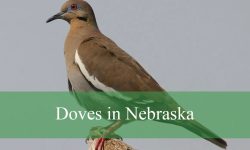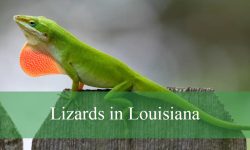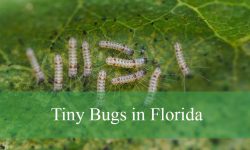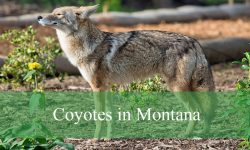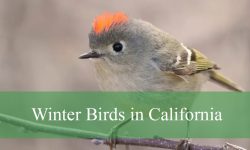Oregon is a paradise for birdwatchers, where shades of blue shimmer across forests, rivers, and open fields. From the gentle flight of swallows to the bold calls of jays, these birds bring vivid color and movement to every landscape. Their feathers glint like fragments of sky, adding beauty to even the quietest mornings.
Blue birds are often seen darting above meadows, perched on fence lines, or calling from tall pines. Their songs mix with the sound of wind and water, creating a peaceful rhythm that defines Oregon’s natural charm. Each species has its own pattern, tone, and personality, making every sighting unique.
This guide introduces 17 stunning blue birds found across Oregon, with details on their identification, songs, and habitats. It is a celebration of color and sound for anyone who loves the outdoors and finds joy in watching these bright-winged travelers of the sky.
Types of Blue Birds Found in Oregon
Western Bluebird (Sialia mexicana)
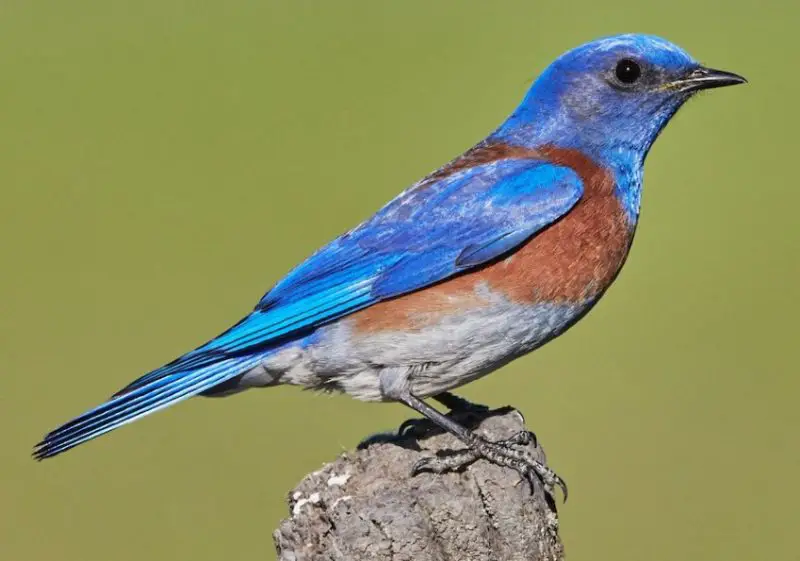
The Western Bluebird is one of Oregon’s most charming native species, known for its deep blue plumage and warm rust-colored chest. Males display brilliant cobalt-blue wings and back, while females are softer in color with grayish-blue tones. These small thrushes typically measure around 6.5 to 7 inches in length, with short tails and slender black bills.
In Oregon, Western Bluebirds can be spotted in open woodlands, meadows, and parklands, particularly near scattered trees or forest edges. They prefer areas with perches for hunting insects and cavities for nesting. During the breeding season, they often use old woodpecker holes or nest boxes provided by conservation efforts.
Their behavior is gentle and social, especially outside the breeding season when they gather in small flocks. Western Bluebirds feed mainly on insects in the summer and switch to berries and fruits during winter months. They often perch low before swooping down to catch prey on the ground.
Their song is a soft, melodious series of short warbles and whistles. In Oregon’s early mornings, their calls can often be heard echoing through open fields, adding a pleasant soundscape to rural landscapes.
Mountain Bluebird (Sialia currucoides)
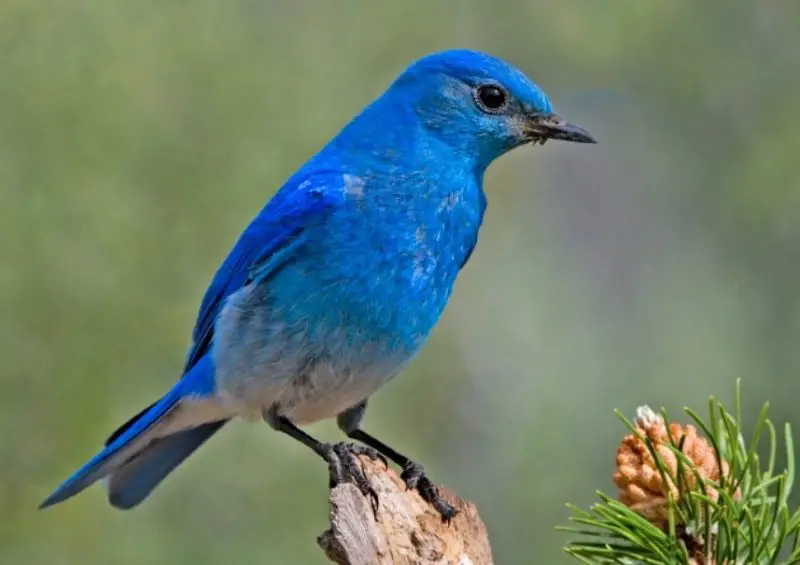
The Mountain Bluebird is a strikingly beautiful bird with sky-blue plumage that gleams under Oregon’s sunlight. Males are vivid turquoise-blue all over, while females have grayish-brown bodies with hints of pale blue on the wings and tail. They are slightly larger than the Western Bluebird, measuring about 7 inches long with a wingspan of 12 inches.
This species favors high-elevation meadows, grasslands, and open foothills throughout central and eastern Oregon. During spring and summer, they can be found nesting in natural cavities or old fence posts in mountainous regions. They are often seen perched on fence lines or hovering midair as they hunt insects.
Mountain Bluebirds are active and agile hunters. They primarily feed on grasshoppers, beetles, and other flying insects during the warmer months. In winter, they migrate to lower elevations and eat berries to survive the cold.
Their song is a soft, flute-like warble, often described as gentle and soothing. When large flocks gather in open fields, their blue feathers shimmer against the snow or green grass, creating one of Oregon’s most breathtaking wildlife sights.
Barn Swallow (Hirundo rustica)
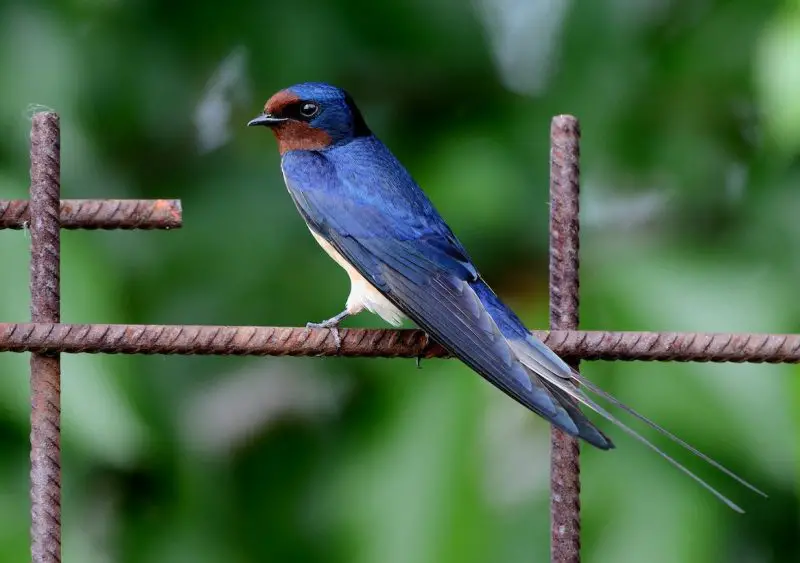
The Barn Swallow is easily recognized by its glossy blue upperparts, reddish forehead and throat, and long, deeply forked tail. Adults typically measure 7 inches in length and have a streamlined body built for graceful flight. Females have slightly shorter tail streamers and paler underparts than males.
In Oregon, Barn Swallows thrive in rural and suburban areas, often nesting under barns, bridges, and eaves of buildings. They prefer open fields and wetlands where they can hunt flying insects with remarkable precision. Their mud-built cup nests are a familiar sight in farmyards across the state.
Barn Swallows are highly social and often seen in large flocks gliding smoothly over pastures or lakes. Their aerial acrobatics are mesmerizing, as they dart and swoop in pursuit of insects. They also exhibit strong site fidelity, returning to the same nesting areas year after year.
Their song is a cheerful mix of twitters and chirps, often delivered while flying. The Barn Swallow’s constant chatter is a lively sound of Oregon’s countryside during the warm months.
Tree Swallow (Tachycineta bicolor)
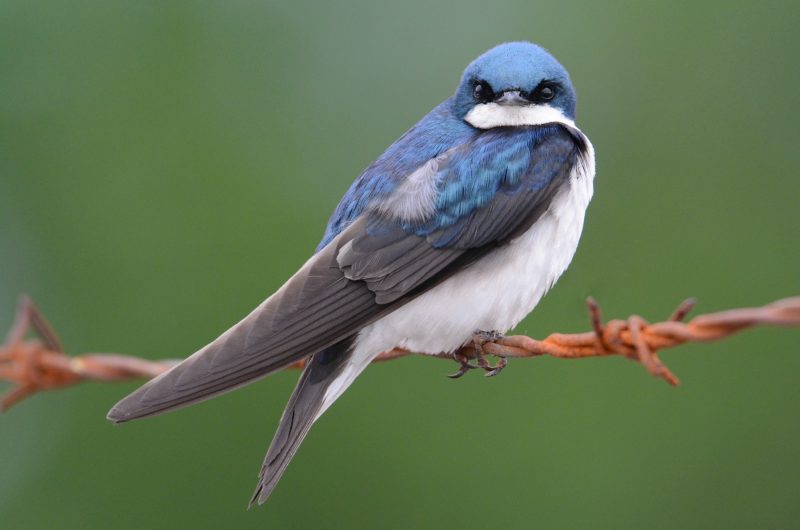
The Tree Swallow is a sleek bird with metallic blue-green upperparts and pure white underparts, giving it a striking contrast in flight. Adults are about 5 to 6 inches long, with pointed wings and a slightly notched tail. Both sexes appear similar, though females may show duller plumage during the breeding season.
Tree Swallows are common throughout Oregon’s wetlands, lakeshores, and open fields with scattered trees. They nest in tree cavities, nest boxes, or old woodpecker holes near water. These agile fliers are among the first migratory birds to return to Oregon in early spring.
Their diet consists mainly of flying insects, including mosquitoes, flies, and beetles. During cooler months, when insects are scarce, they may consume berries. Tree Swallows often form large flocks that glide gracefully over open water, displaying impressive aerial coordination.
Their song is a soft, liquid series of chirps and gurgles that sound like gentle laughter. When hundreds gather near Oregon’s lakes in late summer, their calls blend into a pleasant chorus that fills the evening air.
Violet-green Swallow (Tachycineta thalassina)
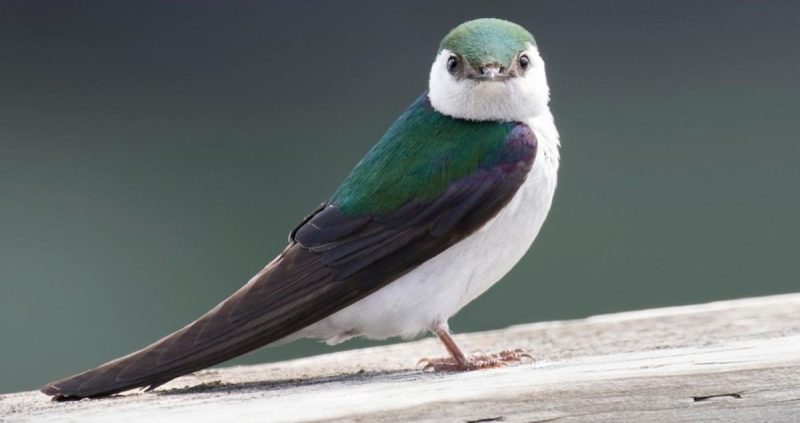
The Violet-green Swallow stands out with its shimmering green back and violet-colored rump, paired with a clean white face and underparts. Measuring about 4.7 to 5.5 inches long, it has long, pointed wings and a slightly forked tail. Its iridescent plumage often appears to shift colors in sunlight, making it one of Oregon’s most beautiful aerial birds.
This species prefers open woodlands, mountain valleys, and forest edges across much of Oregon, especially near water sources. They nest in tree cavities, cliff crevices, and even in nest boxes. During migration, they can be seen soaring high over forests and meadows in large groups.
Violet-green Swallows are agile and energetic fliers, feeding almost exclusively on small airborne insects. Their fast, twisting flight pattern helps them catch prey with ease, and they often compete playfully with other swallow species for food in open skies.
Their song consists of soft, musical chips and twittering notes. In Oregon’s summer evenings, they can be seen darting through the air as their violet-green feathers glint in the sunset — a truly mesmerizing sight for birdwatchers.
Blue Jay (Cyanocitta cristata)
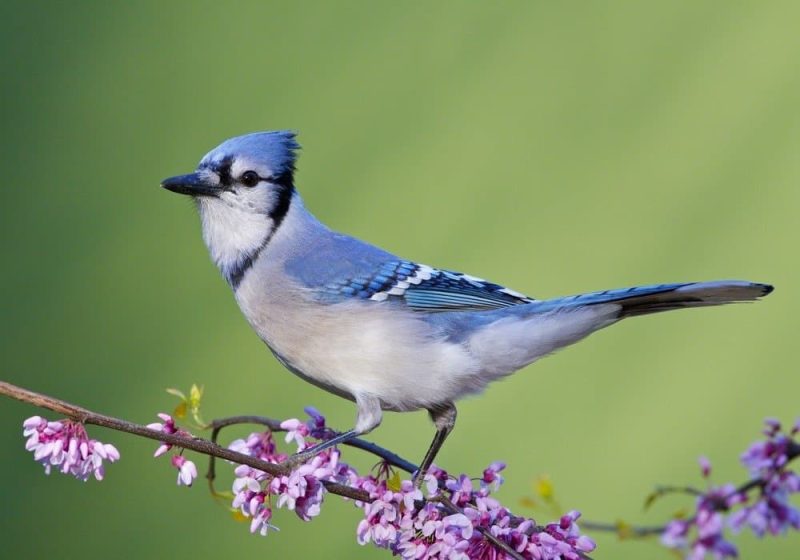
The Blue Jay is a striking and intelligent bird recognized for its vivid blue plumage, white chest, and black collar around the neck. Measuring about 9 to 12 inches long, it has a sturdy build, a crest on its head, and a long, rounded tail marked with black bars. Its bold appearance makes it one of the most easily recognizable blue birds in Oregon.
Although more common in the eastern United States, Blue Jays are occasionally found in Oregon’s forests, suburban parks, and wooded areas, particularly in the state’s northeastern regions. They prefer oak and pine woodlands where they can forage for acorns, nuts, insects, and seeds.
Blue Jays are known for their clever and curious behavior. They use their intelligence to store food, mimic the calls of other birds (even hawks), and warn others of potential danger. Their social nature makes them frequent visitors at backyard feeders, where they often dominate smaller birds.
Their call is a loud, harsh “jay-jay” sound, but they also produce musical notes and soft whistles. In Oregon’s mixed woodlands, their vocal presence adds energy and excitement to the forest soundscape.
Steller’s Jay (Cyanocitta stelleri)
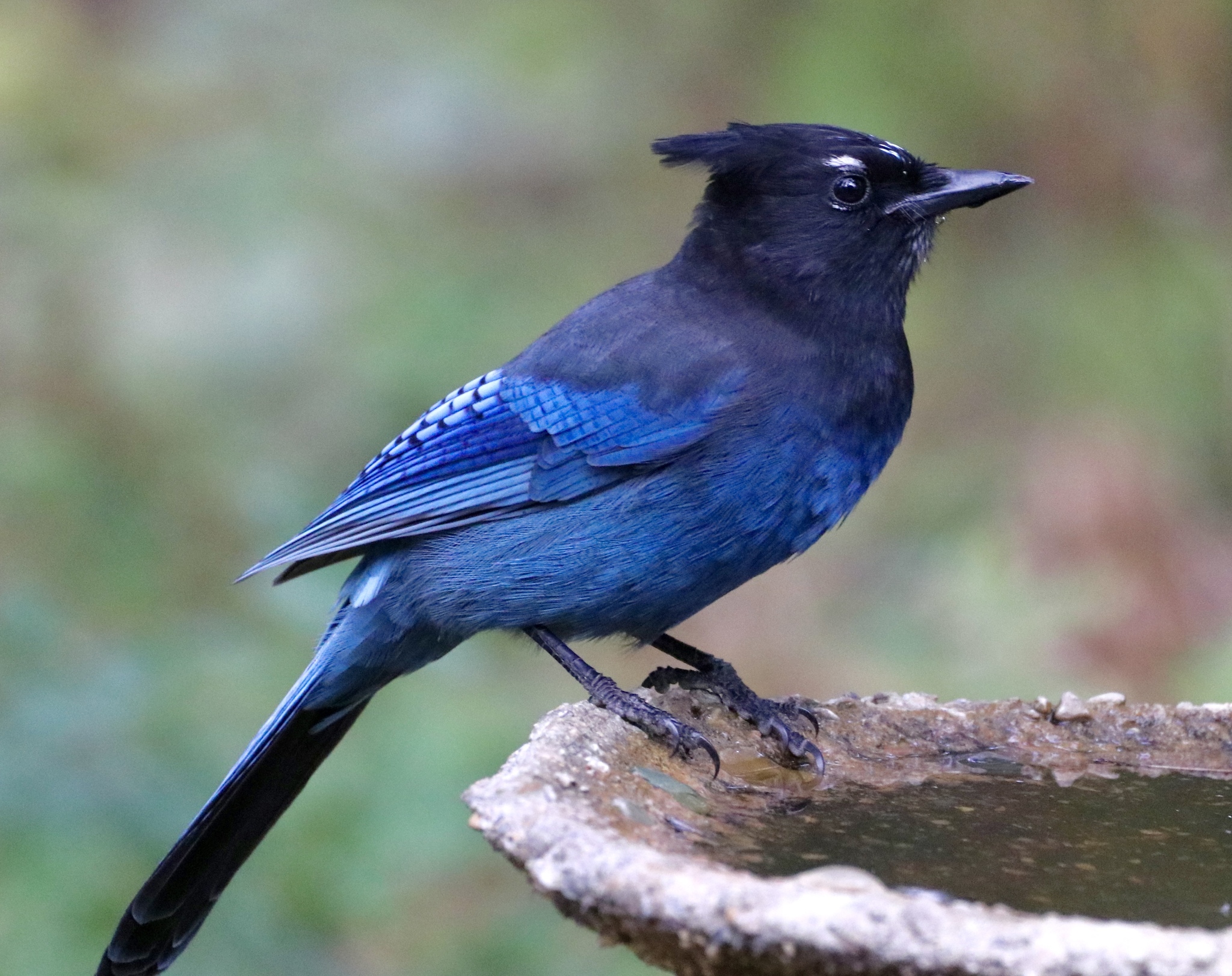
Steller’s Jay is Oregon’s state bird of the mountain forests, easily recognized by its deep blue body and contrasting black head and crest. This jay measures about 11 to 13 inches long, with a sleek, strong build and powerful bill. Its feathers shimmer with shades of blue and indigo under sunlight, making it one of the most dazzling jays in North America.
It thrives in coniferous forests, mountain slopes, and shaded woodlands throughout western and central Oregon. Steller’s Jays are frequent visitors to campgrounds and picnic areas, often scavenging for food. They are adaptable and comfortable around humans, though still wary and alert.
Their diet includes insects, seeds, nuts, fruits, and small animals. They also cache food for winter, hiding it in bark crevices or under leaves. Highly intelligent and bold, these jays often work together or mimic the sounds of predators to scare away competition.
Their call is a loud, raspy “shack-shack-shack” that echoes through Oregon’s forests. Despite their noisy reputation, Steller’s Jays occasionally produce softer, more melodic sounds during calm interactions or nesting seasons.
California Scrub-Jay (Aphelocoma californica)
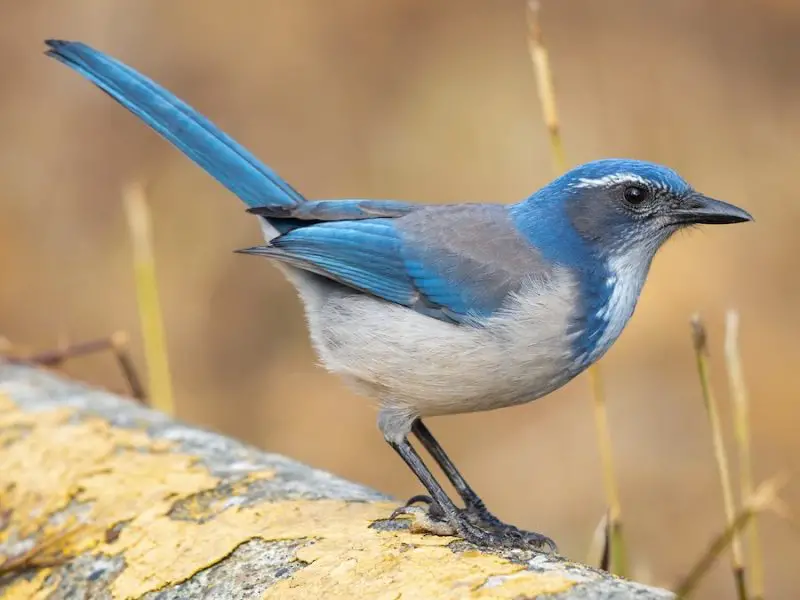
The California Scrub-Jay is a handsome bird with a vibrant blue head, wings, and tail contrasted by a gray back and white underparts. It is smaller and sleeker than most jays, measuring about 11 inches long. Its sharp, angular features and lively expressions make it an unmistakable sight across Oregon’s western landscapes.
This species thrives in oak woodlands, chaparral, and suburban areas, particularly in western Oregon. It often perches on fences, shrubs, or low trees, scanning for insects, acorns, and seeds. Unlike forest-dwelling jays, Scrub-Jays prefer open, sunlit areas and are comfortable living close to humans.
California Scrub-Jays are clever problem-solvers. They are known for their food-caching habits, remembering where they’ve stored hundreds of acorns. They are also assertive and territorial, often chasing away other birds to defend their feeding spots.
Their call is a harsh, nasal “shreeenk” or “check-check” that carries over long distances. Though not musical, it’s distinctive and frequently heard in Oregon’s lowland valleys and backyard gardens.
Pinyon Jay (Gymnorhinus cyanocephalus)
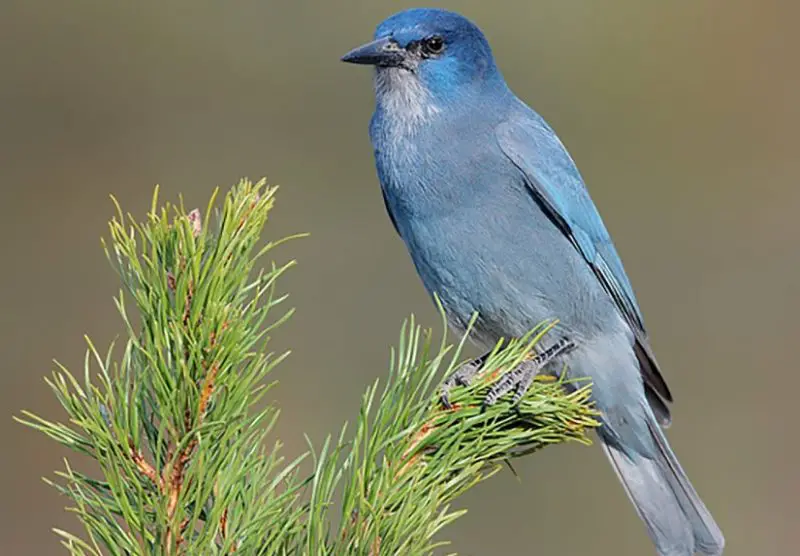
The Pinyon Jay is a stocky, deep blue bird with a short tail, pointed wings, and a heavy black bill. Its coloration is more uniform than other jays, with duller blue tones covering the head, wings, and underparts. Adults average 10 to 11 inches in length and lack the crest seen in Blue Jays or Steller’s Jays.
In Oregon, Pinyon Jays inhabit dry pine forests and high desert regions, especially in the south-central and eastern parts of the state. They are strongly associated with pinyon pine habitats, where they feed primarily on pine seeds, insects, and berries.
Pinyon Jays are extremely social and live in large, cooperative flocks that forage and nest together. They are excellent at storing seeds underground, often forgetting some, which helps new pines grow—a crucial ecological role in Oregon’s arid woodlands.
Their call is a sharp, nasal “kraa-kraa,” often given in groups as they fly overhead. Though not melodious, their voices are a signature sound of Oregon’s dry pine landscapes.
Lazuli Bunting (Passerina amoena)
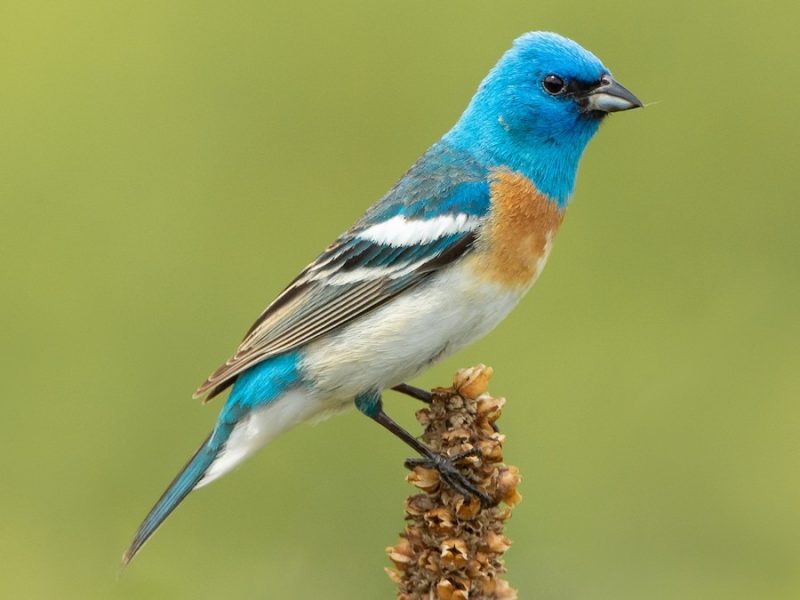
The Lazuli Bunting is one of Oregon’s most stunning songbirds, with males displaying a brilliant turquoise-blue head and back, a white belly, and a warm orange breast. Females are more subdued with brownish-gray tones and light blue hints on their wings and tail. They are small, about 5 to 6 inches long, with short conical bills suited for seed eating.
These birds prefer open brushy areas, riparian zones, and woodland edges throughout Oregon during spring and summer. They often perch on shrubs or fences, singing brightly to mark their territory. During migration, they can also be spotted in lowland meadows and gardens.
Lazuli Buntings feed on seeds and insects, often visiting feeders for millet or sunflower seeds. They are territorial during breeding season but become more social later in the year, sometimes joining mixed flocks of finches and sparrows.
Their song is a rapid, sweet warbling series of high-pitched notes, similar to a canary’s tune. On Oregon’s summer mornings, their cheerful music fills hillsides and river valleys, making them a favorite among birdwatchers.
Indigo Bunting (Passerina cyanea)
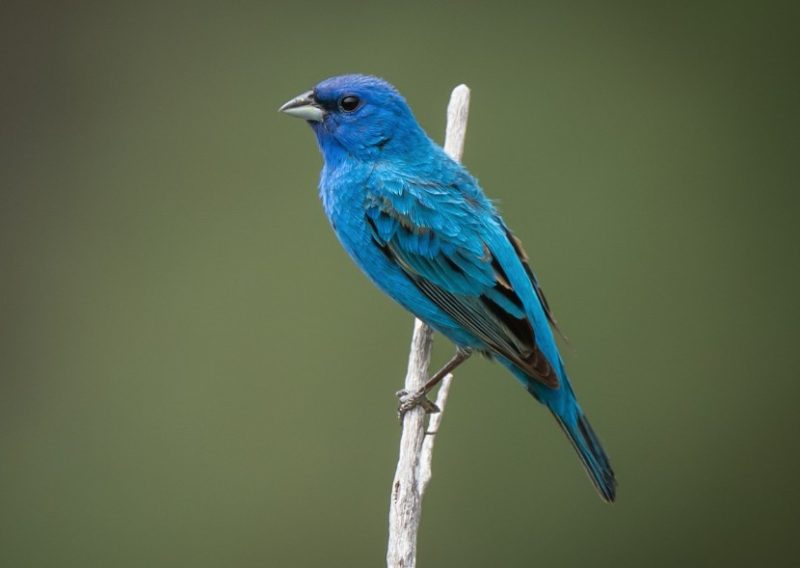
The Indigo Bunting is a small but dazzling songbird, known for its vibrant, all-over blue plumage in males. During breeding season, males shimmer in electric indigo under sunlight, while females display soft brown tones with faint hints of blue on the wings. These birds measure about 4.5 to 5 inches long with short, conical bills ideal for seed eating.
In Oregon, Indigo Buntings are uncommon but occasionally appear during migration in the state’s eastern and southern regions. They favor weedy fields, forest edges, and shrubby clearings. Though not as widespread as Lazuli Buntings, they can sometimes be spotted where suitable brushy habitats overlap.
Indigo Buntings are active and curious, often singing from the tops of trees or utility wires. Their diet consists of insects, seeds, and small fruits. During migration, they navigate at night, guided by starlight—a remarkable adaptation among small songbirds.
Their song is a bright, cheerful series of paired notes that sound like “sweet-sweet, chew-chew, see-see.” When heard in Oregon, it brings a vibrant splash of color and sound to warm summer days.
Belted Kingfisher (Megaceryle alcyon)
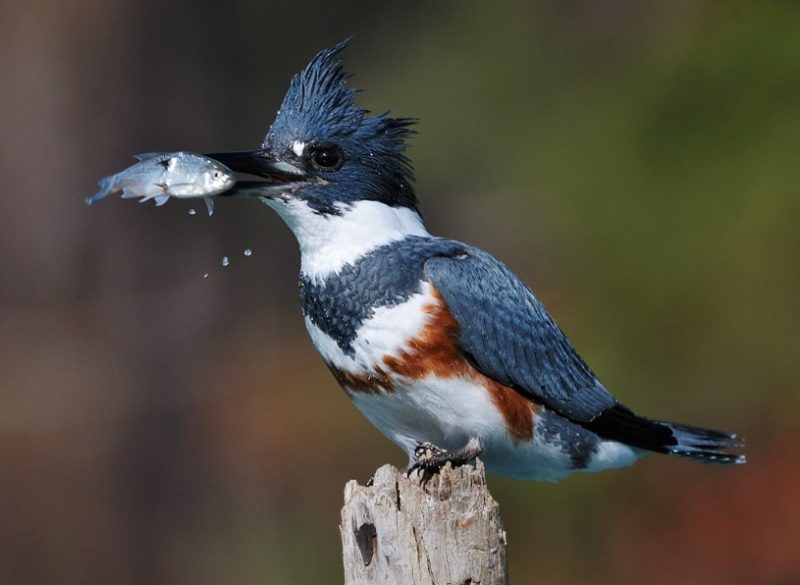
The Belted Kingfisher is a striking blue-gray bird with a large head, shaggy crest, and long, heavy bill built for fishing. Both sexes are blue-gray on top with white underparts, but females have a rust-colored band across the chest—making them one of the few bird species where females are more colorful. They measure about 11 to 14 inches long with a wingspan of up to 23 inches.
This species is common across Oregon’s rivers, lakes, and coastal areas. Belted Kingfishers prefer clear, open waters where they can spot fish from perches or while hovering midair. They dig burrows into sandy riverbanks to nest and raise their young.
Their behavior is energetic and bold. Kingfishers are expert divers, plunging headfirst into the water to catch fish, crustaceans, and aquatic insects. They often patrol territories along waterways, emitting their signature rattling call.
Their vocalization is a sharp, dry rattle that echoes along river valleys and lake shores. Watching one hover and dive for prey is one of Oregon’s most exciting birding experiences.
Purple Martin (Progne subis)
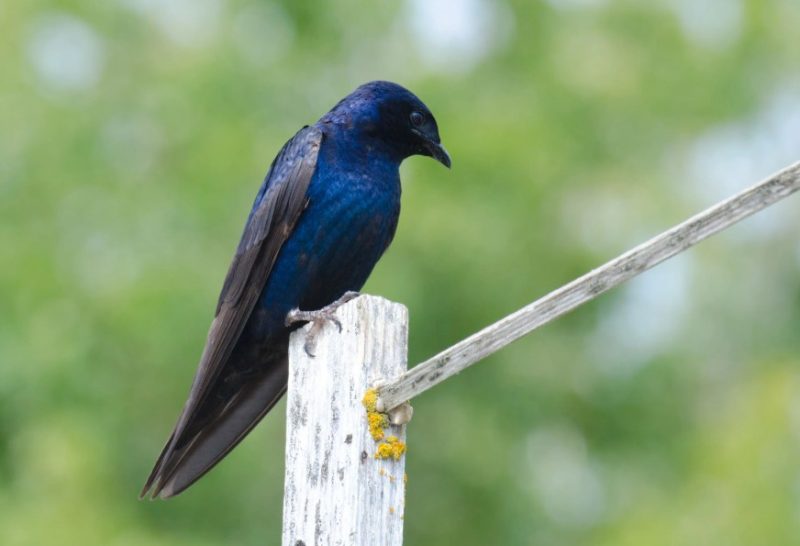
The Purple Martin is North America’s largest swallow, admired for its glossy blue-black plumage and graceful flight. Adult males have a deep purple-blue sheen, while females and juveniles are lighter, with grayish underparts and less iridescence. These agile birds reach about 7.5 to 8 inches in length with a wingspan near 16 inches.
In Oregon, Purple Martins are found mostly in western regions during the summer months. They nest in colonies, often in special birdhouses or gourds provided by humans near wetlands, lakes, and open fields. These birds rely heavily on artificial nest boxes since natural cavities have become scarce.
Their diet consists almost entirely of flying insects, including dragonflies, beetles, and wasps. They hunt high in the air with swift, acrobatic movements and are often seen soaring gracefully over Oregon’s wetlands and river valleys.
Their song is a soft, gurgling chatter that sounds musical and continuous. During nesting season, colonies fill the air with gentle, melodious tones, creating a peaceful and lively atmosphere.
Blue-gray Gnatcatcher (Polioptila caerulea)
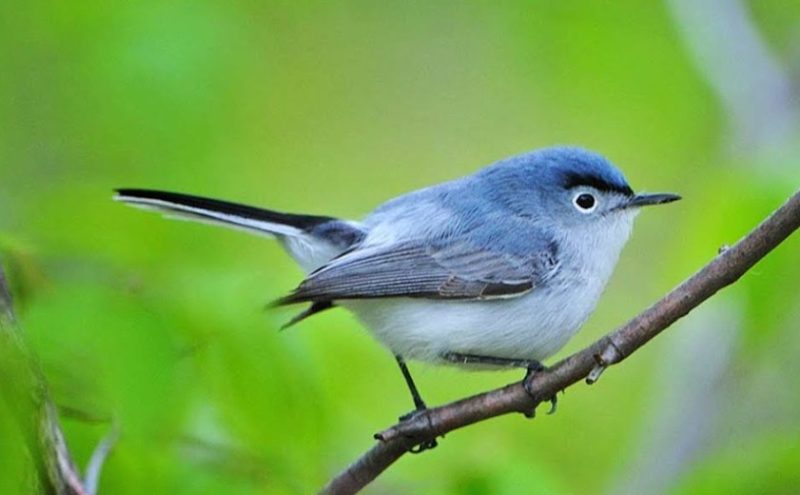
The Blue-gray Gnatcatcher is a tiny, elegant bird with soft blue-gray upperparts, a white underside, and a long, narrow black-and-white tail. It measures about 4 to 4.5 inches long, with a slender build and expressive movements. Males develop a faint black eyebrow during the breeding season, giving them a subtle yet charming look.
In Oregon, these birds are mostly found in the southern and western regions, inhabiting open woodlands, riparian areas, and scrubby slopes. They flit energetically among branches, constantly wagging their tails as they search for insects.
Blue-gray Gnatcatchers are fast and restless foragers, often working through foliage to catch tiny insects, spiders, and larvae. They build delicate cup-shaped nests made from plant fibers, spider silk, and lichens, perfectly camouflaged among branches.
Their voice is a thin, buzzy series of notes and high-pitched “spee-spee” calls. Though small, their energetic presence and gentle songs bring life to Oregon’s oak savannas and woodland edges.
Black-throated Blue Warbler (Setophaga caerulescens)
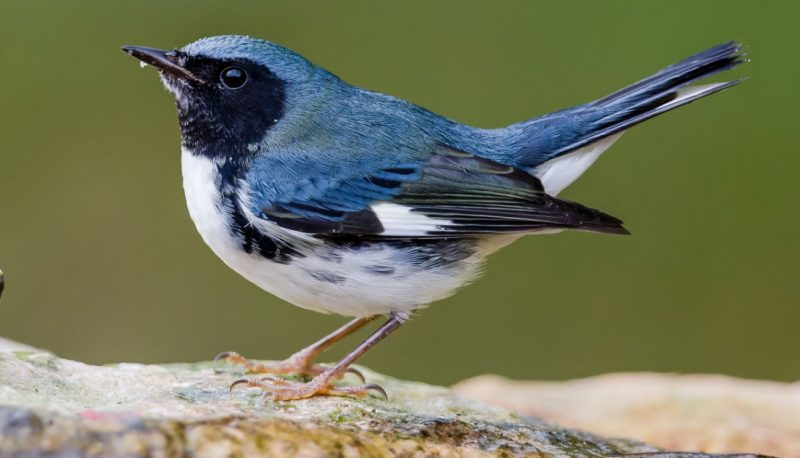
The Black-throated Blue Warbler is a small, vividly colored songbird featuring a deep blue back, black face and throat, and crisp white underparts. Males are unmistakable with their bold contrast of colors, while females appear olive-gray with subtle blue tinges. These warblers measure about 5 inches long and have a slim, agile body suited for darting through foliage.
Though more common in the eastern United States, the Black-throated Blue Warbler occasionally appears in Oregon during migration. Birdwatchers sometimes spot them in dense forests or coastal thickets, especially during fall when wayward migrants pass through the Pacific Northwest.
They feed on small insects, spiders, and caterpillars, often gleaning prey from the undersides of leaves. Their constant movement and alert behavior make them challenging but rewarding to observe.
Their song is a soft, buzzy series of notes that sound like “zur zur zee.” When heard in Oregon’s woodlands, it’s a delightful and unexpected treat for experienced birders chasing rare species.
Blue Grosbeak (Passerina caerulea)
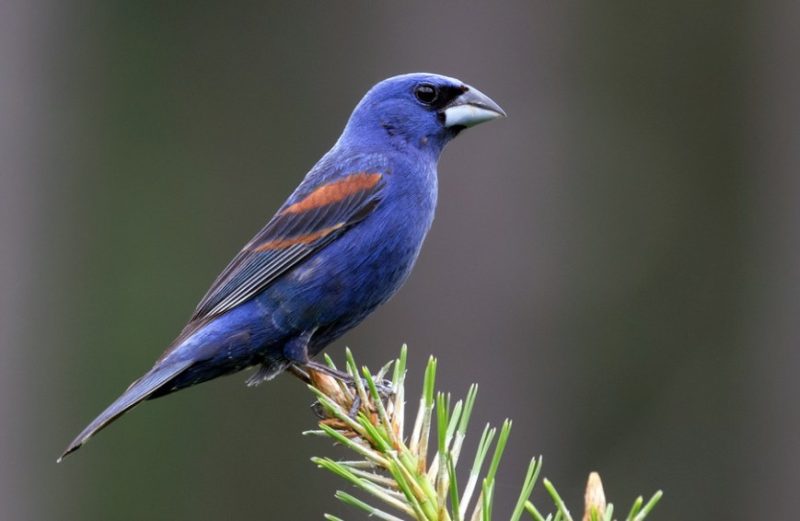
The Blue Grosbeak is a richly colored bird with deep cobalt-blue plumage, chestnut wing bars, and a thick silver-gray beak. Males display vibrant shades of blue that gleam in sunlight, while females are warm brown with faint bluish tinges on the wings and tail. These medium-sized buntings measure about 6 to 7 inches long, with a robust body built for cracking seeds.
In Oregon, Blue Grosbeaks are seen mainly in the southern and eastern parts of the state, particularly in shrubby fields, riparian corridors, and brushy foothills. They prefer warm, open habitats with scattered trees and dense vegetation, often near rivers or farmland edges.
Their behavior is calm but alert. Blue Grosbeaks often perch on tall shrubs or fence posts while singing a series of rich, warbling notes. They feed on insects, seeds, and small fruits, shifting their diet seasonally depending on what’s available.
Their song is a sweet, rolling melody that carries across open fields, often compared to a slower, more mellow version of a Lazuli Bunting’s tune. Spotting one in Oregon’s countryside is always a highlight for birdwatchers searching for flashes of sapphire among summer greenery.
Pygmy Nuthatch (Sitta pygmaea)
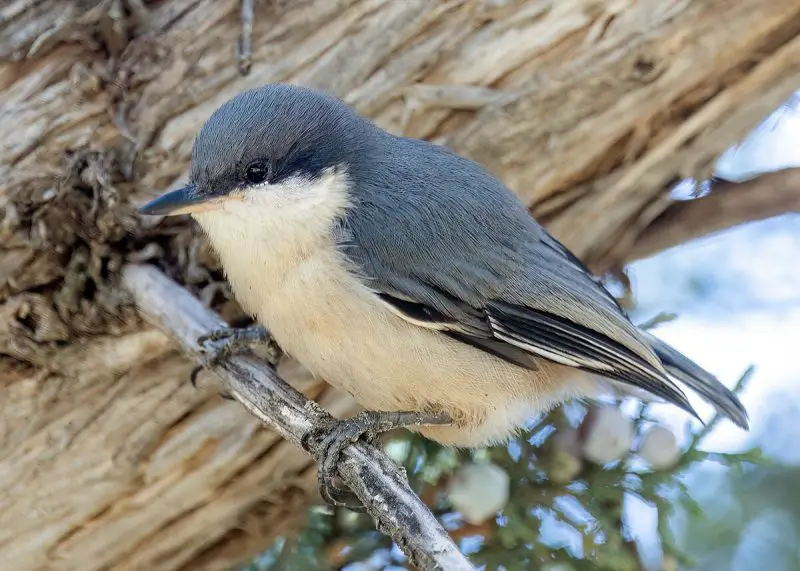
The Pygmy Nuthatch is a charming, tiny bird with bluish-gray upperparts, a pale underside, and a buffy patch on its throat. Measuring only about 4 inches long, it is one of North America’s smallest nuthatches. Despite its size, this bird has a lively, bold personality and is often seen clinging upside-down on pine trunks or darting among branches.
In Oregon, Pygmy Nuthatches are found throughout pine forests and mountainous regions, especially in areas dominated by ponderosa pines such as central and eastern Oregon. They are year-round residents, thriving in both warm summers and snowy winters.
These birds live in tight-knit family groups, sharing nesting duties and roosting together during cold nights for warmth. Their diet includes insects, pine seeds, and small invertebrates, which they skillfully extract from bark crevices using their sharp bills.
Their call is a high, chattering “pit-pit-pit,” often given in rapid bursts as they move through treetops. The soft blue-gray plumage and cheerful energy of the Pygmy Nuthatch make it a delightful bird to encounter in Oregon’s evergreen forests.
Best Time and Places to See Blue Birds in Oregon
Best Time to Spot Blue Birds in Oregon
The best time to observe blue birds in Oregon is from late spring through early fall (April to September). During this period, most blue-colored species—such as Western Bluebirds, Tree Swallows, and Lazuli Buntings—are actively breeding, feeding, and displaying their brightest plumage. Morning hours, just after sunrise, are ideal for spotting them as they are most vocal and active while foraging for insects.
In the colder months, some species like Mountain Bluebirds and Steller’s Jays can still be found in higher or forested regions, while others migrate south. Late spring is particularly rewarding for birdwatchers because it coincides with the arrival of migratory species such as Purple Martins, Barn Swallows, and Indigo Buntings.
Best Birdwatching Locations in Oregon
Oregon offers a wide variety of habitats, making it an excellent place to spot blue birds year-round. The Willamette Valley and Klamath Basin are two of the richest birding regions, attracting Tree Swallows, Western Bluebirds, and Violet-green Swallows in large numbers. Along the coast, especially near Tillamook Bay and Yaquina Bay, Belted Kingfishers and Purple Martins are common sights.
For forest-dwelling species like Steller’s Jays and Pinyon Jays, head to Mount Hood National Forest, Sisters, and Crater Lake National Park. The High Desert region around Bend and eastern Oregon provides excellent opportunities to spot Mountain Bluebirds and Pinyon Jays. Meanwhile, riparian zones and grasslands in southern Oregon are perfect for watching Lazuli and Indigo Buntings in summer.
FAQs About Blue Birds in Oregon
What is the most common blue bird in Oregon?
The most common blue bird in Oregon is the Western Bluebird (Sialia mexicana). It can be found throughout the state in open woodlands, parks, and meadows. Its bright blue and rust-colored plumage makes it easy to identify, especially during spring and summer.
Are Blue Jays native to Oregon?
Yes and no. Steller’s Jays are native and widespread throughout Oregon’s forests, while Blue Jays (Cyanocitta cristata) are more common in eastern regions and are not native to the western parts of the state. Steller’s Jays are the true “Oregon Jay,” known for their loud calls and striking blue-black feathers.
Where can I see Mountain Bluebirds in Oregon?
You can find Mountain Bluebirds in open high-elevation meadows, grasslands, and sagebrush areas—particularly in central and eastern Oregon. Locations like Bend, Steens Mountain, and Hart Mountain National Antelope Refuge are some of the best spots to see them.
Do blue birds stay in Oregon year-round?
Some species, like the Steller’s Jay and California Scrub-Jay, stay in Oregon all year, while others migrate. Swallows, Purple Martins, and Lazuli Buntings typically migrate south to warmer climates during the winter and return to Oregon in spring for breeding.
What is the best time of day to see blue birds?
The best time of day to see blue birds is early morning, shortly after sunrise. Birds are most active during this period as they search for food and sing to establish territories. Evening hours can also offer good viewing, especially near water where swallows feed on flying insects.
Can I attract blue birds to my backyard in Oregon?
Yes, you can attract blue birds by providing nest boxes, bird baths, and native plants that produce berries and seeds. Mealworms, sunflower seeds, and suet are favorites for species like Western Bluebirds and Scrub-Jays. Ensuring a mix of trees, shrubs, and open space also helps create an inviting habitat.
Are any of Oregon’s blue birds endangered or threatened?
Most blue bird species in Oregon are stable, but some, like the Purple Martin, have seen population declines due to habitat loss and competition for nesting cavities. Installing nesting gourds and protecting wetland habitats are vital for their conservation.
What’s the difference between a Western Bluebird and a Mountain Bluebird?
The Western Bluebird has a rust-colored chest and deep blue back, while the Mountain Bluebird is entirely sky blue, with males showing brighter tones. Western Bluebirds prefer wooded meadows, whereas Mountain Bluebirds favor open highland areas. Both species can be seen in Oregon but in different habitats.
Can I photograph blue birds easily in Oregon?
Yes, Oregon’s diverse landscapes make it a fantastic place for bird photography. Early morning and late afternoon provide the best lighting and bird activity. State parks, wildlife refuges, and even suburban gardens can offer great opportunities to capture stunning images of Oregon’s blue birds.

